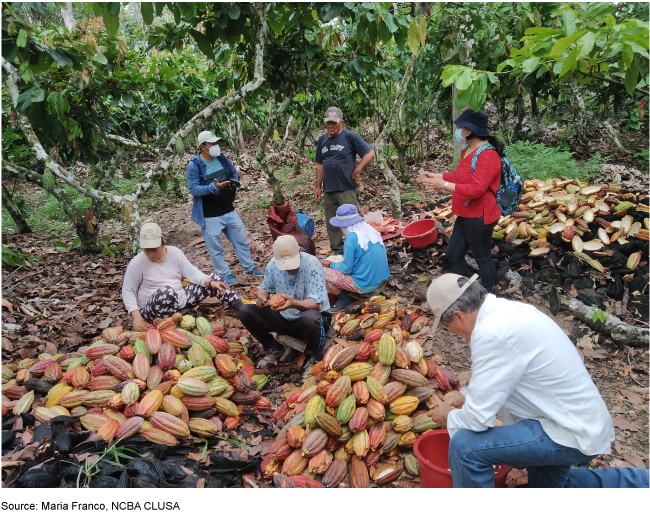What GAO Found
Feed the Future (FTF), a U.S. government–wide global food security initiative coordinated by the U.S. Agency for International Development (USAID), collects data to monitor how FTF projects promote agriculture, resilience, and nutrition (see photos). However, USAID and its FTF partner agencies are limited in their ability to use performance data to assess the initiative’s progress because they have not set FTF-wide performance goals and few FTF indicators fully meet two key attributes of successful performance indicators. Specifically, only three of 40 performance indicators both (1) were clearly linked to the initiative’s overarching goal and (2) had measurable targets. FTF has targets for its overarching goal of reducing poverty and child stunting; however, the FTF agencies cannot determine how the results of FTF’s projects contribute to this overarching goal. USAID officials said it is difficult to set FTF-wide performance goals and targets because of the initiative’s breadth. However, prior GAO work provides strategies to help the agencies conduct meaningful FTF-wide performance monitoring.
Examples of Feed the Future’s Agriculture, Resilience, and Nutrition Projects

USAID’S 2017–2020 public reports on FTF include some information on FTF’s projects, but contain unclear and unsupported statements on its progress. USAID followed two of four leading practices on performance reporting by including baseline or trend data and discussing data limitations in the FTF reports. However, the reports did not describe how the performance data align with and can be used to assess progress toward FTF’s objectives—another leading practice. Further, the reports did not outline performance targets so readers could compare the performance data against these targets, also a leading practice. Lastly, although the reports stated that FTF has led to estimated decreases in poverty and stunting, FTF data do not support these statements on FTF’s impact. As a result, FTF’s public reports do not communicate a clear picture of the initiative’s progress toward achieving its objectives.
As required by law, USAID developed a process to assess countries’ potential to graduate from being an FTF target country, but USAID has not fully followed this process. USAID developed annual scorecards to assess the countries; however, due to a bureau restructuring and the COVID-19 pandemic, USAID has not shared the 2019 or 2020 scorecards with its missions or the FTF partner agencies. USAID also has not worked with these entities to complete required annual reviews of the graduation assessment process itself. As a result, USAID has limited the partners’ engagement in, and the usefulness of, this process.
Why GAO Did This Study
The United Nations reported that nearly 690 million people in the world were undernourished as of 2019, and estimated that food insecurity could worsen due to COVID-19. In response to the Global Food Security Act of 2016, FTF agencies monitor and report the progress of their global food security assistance and developed a process to graduate FTF target countries from the initiative.
GAO was asked to review U.S. global food security assistance. This report evaluates, among other things, USAID’s monitoring and public reporting of FTF’s progress and assessment of countries’ potential to graduate from FTF. GAO reviewed FTF documents and data, and interviewed representatives of USAID, FTF partner agencies, and other stakeholders, including implementing partners from four sample countries selected based on factors such as geographic diversity and amount of food security funding.








